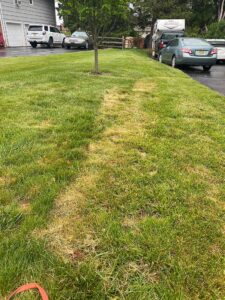Main Content

In a similar manner that insects and diseases play a “canary in the coal mine” role, the types of weeds that exist in a lawn may indicate a specific underlying problem. Often identifying the problem will help suppress weeds. For example, crab grass can proliferate on compacted, acidic (low pH) soils. Often aerating the area, and applying compost and limestone, as well as physically removing the crabgrass will help stimulat the desired turfgrass which crowds out the crabgrass.
In addition, overseeding the lawn with a perennial turfgrass mixture in the early spring and fall will help to crowd out weeds. Seeding bare spots and thin areas as well as applying a 1/4 inch of compost at seeding will help prevent the germination of weed seeds. Raising the lawn mower blade to keep grass at 3 or 4 inches will shade the soil surface and prevent weed seeds from germinating. Lastly, hand pulling, before weeds set seed and get out of control will help deter future weed growth as long as the underlying soil problem or cultural practice causing the weeds is identified.
In an organic program, it is important to define a tolerance level of weeds. An organic lawn will never be completely weed free; but a well balanced lawn with high quality soils will promote healthy turf that can outcompete most weeds.